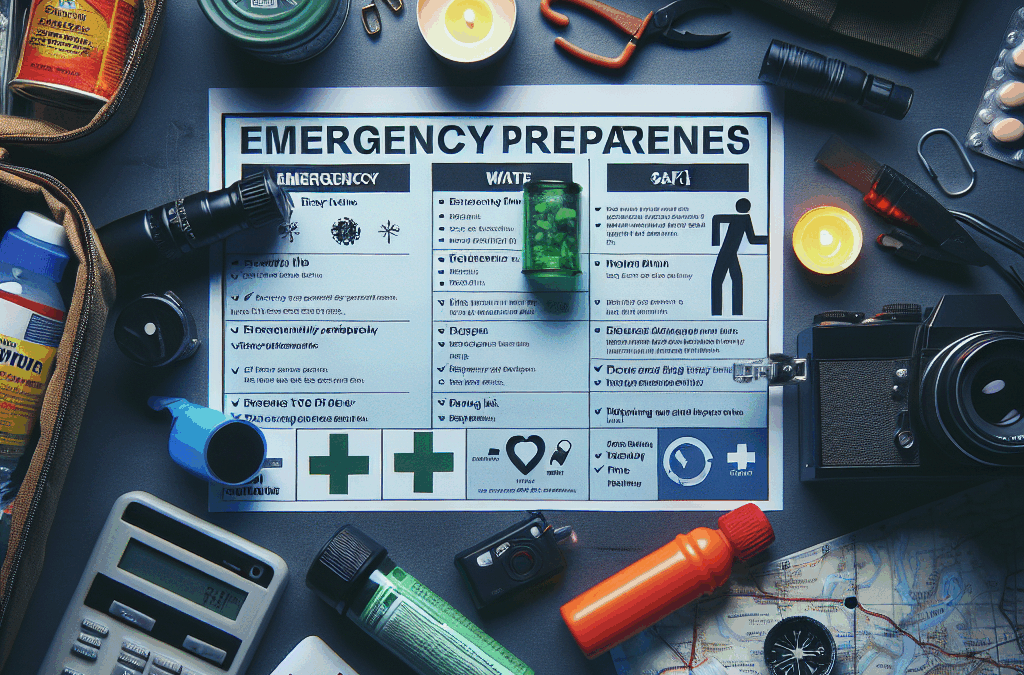In an unpredictable world, being prepared for emergencies is not just a wise choice; it’s a necessity. Whether it’s natural disasters, health crises, or other unexpected events, having a solid plan can make all the difference. Here’s how you can ensure you and your loved ones are ready for anything.
*Understanding the Risks: Assessing Your Vulnerabilities**
The first step in effective emergency preparedness is to understand what risks loom over your household. This means taking a good look at your surroundings—are you in an area prone to floods, wildfires, or earthquakes? Consider also personal vulnerabilities such as medical conditions or mobility issues that could affect how you respond during crises. Take time to research local hazards and consult with community resources to gain insights into potential threats. By identifying these vulnerabilities upfront, you’re already ahead of the game.
*Building Your Emergency Kit: Essentials for Every Household**
Next on the list is assembling an emergency kit—a crucial component of any preparedness plan. Ideally, this kit should be easily accessible and stocked with essentials that will sustain your family for at least 72 hours. Start with water—one gallon per person per day is recommended—alongside non-perishable food items like granola bars and canned goods. Don’t forget first aid supplies, flashlights with extra batteries, personal hygiene products, and important documents stored in waterproof bags.
Moreover, consider including specific items tailored to your family’s needs such as medications or baby supplies. Regularly check and refresh your kit every six months to ensure everything remains usable.
*Crafting a Family Emergency Plan: Communication and Safety Strategies**
Once your kit is ready, it’s time to develop a family emergency plan that encompasses communication strategies and safety protocols. Hold a family meeting where everyone can contribute their ideas—this ensures that each member feels involved and empowered.
Decide on safe meeting points both near home and farther away in case evacuation becomes necessary. Establish clear communication lines; designate one out-of-town contact who can coordinate information if local networks fail. It’s also vital to educate all members about evacuation routes and procedures so everyone knows what to do when panic sets in.
Thank you for reading this post, don't forget to subscribe NOW for FREE!
*Staying Informed: Utilizing Technology and Resources**
In today’s digital age, technology plays an essential role in staying informed during emergencies. Download apps specifically designed for disaster alerts from trusted organizations like the Red Cross or FEMA which provide real-time updates tailored to your location.
Social media platforms can also serve as useful tools for gathering information quickly—however, always verify details before acting on them due to potential misinformation circulating online. Additionally, consider investing in weather radios that keep you updated on severe weather warnings even when power fails.
*Training and Drills: Practicing Your Preparedness for Real-Life Scenarios**
Finally, preparation isn’t complete without practice! Conduct regular drills simulating different emergency scenarios—from earthquake drop-cover-hold drills to fire evacuations—to help instill confidence among family members regarding their roles during actual events.
Engage everyone by assigning specific tasks based on individual strengths; children especially benefit from knowing how they can contribute during crises. The more familiar everyone becomes with procedures through training sessions, the better equipped they will be when real situations arise.
In summary, effective emergency preparedness requires understanding risks unique to your environment while building robust plans tailored specifically for your household needs. By following these essential steps—assessing vulnerabilities, building kits, crafting plans, utilizing technology effectively, and engaging in drills—you’ll foster resilience within yourself and those around you against whatever challenges may come your way!






